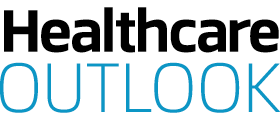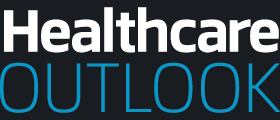We explore the developing role of telehealth services, and how the use of digital information and communication technologies in health-related services is accelerating across Africa.
TECHNOLOGY MEETS HEALTH
Since the onset of the COVID-19 pandemic, telehealth usage has surged, as providers and consumers alike seek ways in which to safely access and deliver healthcare in a climate of limited travel and in-person interaction.
Telehealth, the provision of healthcare remotely by means of telecommunications technology, has proven to be a safe, efficient means of patient care during the ongoing public health emergency, minimising exposure to COVID-19 in the likes of hospital queues and waiting rooms.
Sub-Saharan Africa, a region already burdened by disease and a shortage of healthcare workers prior to the pandemic, has experienced a telehealth boom in recent years, as evidenced by an increase in the use of digital health solutions and interventions.
In light of this, the peer-reviewed medical journal The Lancet has even dubbed sub-Saharan Africa as the new breeding ground for global digital healthcare. The region has become an emerging arena for telehealth innovations, aimed at strengthening both patient management as well as the surveillance and prevention of diseases.
Take diabetes, for example. Through telehealth, diabetics can use a mobile phone or other device, such as a tablet or computer, to upload food logs or blood sugar readings to be electronically reviewed by a nurse, download apps to assist with counting carbohydrates or estimating insulin doses, and get email or text reminders for flu shots.
TELEHEALTH TRANSITION
It doesn’t stop there, as the variety of ways in which telehealth services in Africa can be delivered allows service providers to cater for a diverse range of other client healthcare needs. Smartphones especially have been utilised for an array of different purposes when it comes to digital health, from maternal health support in South Africa to digital health financing access in Kenya.
In sub-Saharan Africa, there awaits a young generation of people ready to transition towards smartphone-based telehealth communication. The youth of today continue to absorb digital knowledge at a much faster pace than their elders, so it is therefore reasonable to infer that the health of young people may improve together with the large-scale implementation of high quality, digital health solutions and interventions.
Social media has also helped to promote health, whilst emerging technologies such as wearables and sensors have opened up fresh possibilities in terms of diagnostics and health monitoring.
Big data and artificial intelligence, meanwhile, have demonstrated proven applicability for both outbreak control and preparedness, not least during the COVID-19 pandemic, and may yet be applied to a number of other diseases present in Africa.
There has been an encouraging uptake of telehealth in the continent as a result. 41 out of 54 African countries now have national digital health strategies and architectures, which shows that widespread opportunities within digital health have been identified at a national level.
Complemented by an increased governmental emphasis on reliable digital infrastructure, as well as regulations related to the implementation of digital solutions, sub-Saharan Africa in particular represents an enabling environment for telehealth.
BARRIERS REMAIN
However, there are still challenges that the whole African continent must overcome in order for telehealth to be truly enabled. Individual barriers such as low digital literacy skills and limited connectivity infrastructure, for example, need to be addressed in order to boost digital health activity in the region.
The health and wellbeing of collective Africa is also threatened by the likes of climate change, a shortage of high-quality medicines and well-trained healthcare workers, and limited accessibility to medical services.
Indeed, for millions of Africans, there is little or no access to healthcare settings. Half of Africa’s population reside in rural areas, yet only a quarter of the continent’s doctors are deployed there. Even in Nigeria, Africa’s richest and most populous country, there are only an estimated four doctors per 10,000 patients, according to figures from the World Health Organisation.
Thankfully, the emergence of telehealth should help to fill the void of skilled, professional medical personnel in many parts of the continent, and provides endless possibilities for much-needed healthcare services to reach all corners of the ever-increasing African population, regardless of location.
By bringing healthcare directly to the patient through a personalised patient-centric approach, telehealth also circumnavigates other risks such as long-distance travel and motor vehicle incidents, which unfortunately can be commonplace on roads that are poorly maintained in Africa.
All things considered, Africa has the potential become an attractive development partner for innovative telehealth innovations and technologies.
























